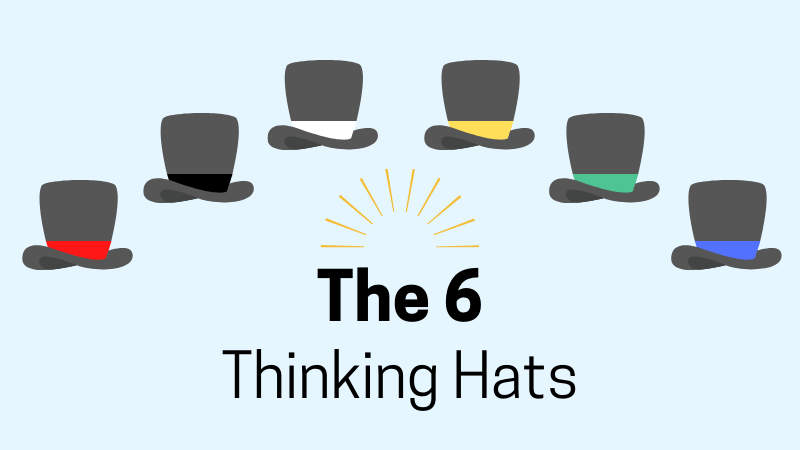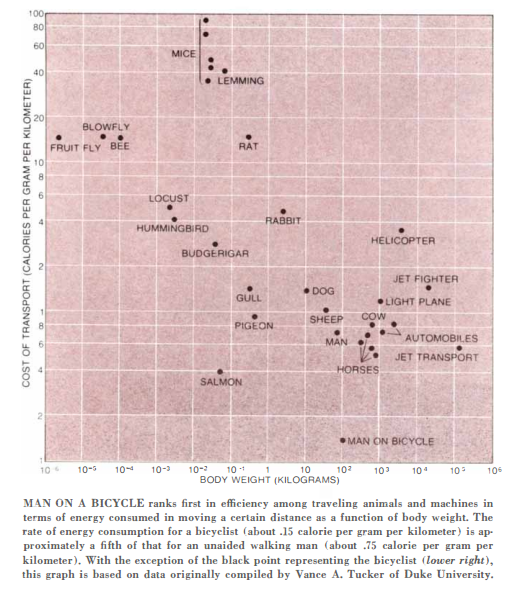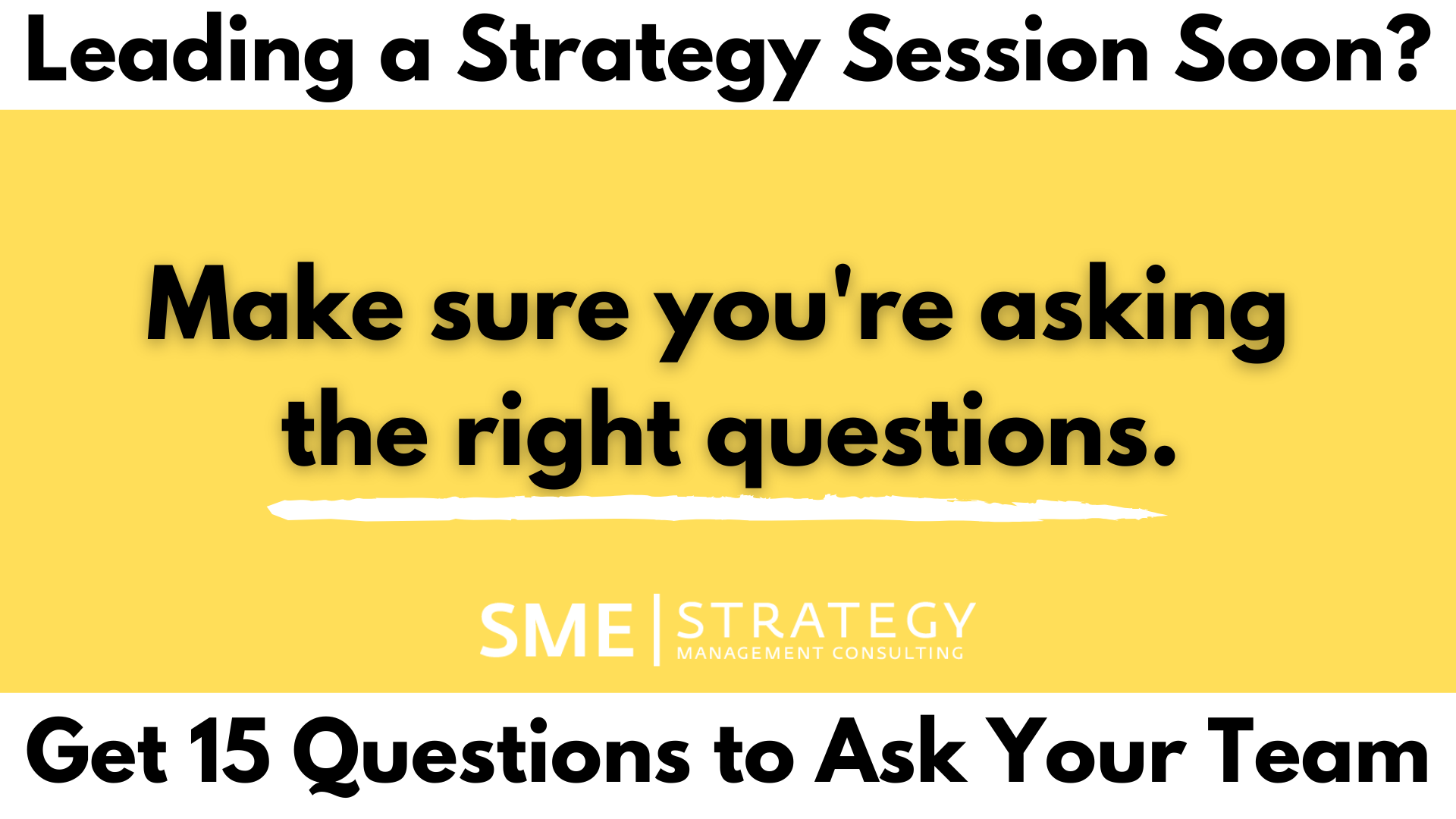How to Use the 6 Thinking Hats When Riding the Strategic Planning Rollercoaster

SME Strategy is a strategy consulting company that specializes in aligning teams around their vision, mission, values, goals and action plans. Learn more about how we can help you and your team create a strategic plan with our strategic planning and implementation services.
“The biggest enemy of thinking is complexity” - Edward de Bono.
Perhaps nothing else sets the human race apart from other species and primates like our natural ability to think. Considering different abilities such as locomotion, the homo sapien isn’t the most efficient.
However, according to research by Scientific American in 1973, a man on a bicycle becomes more effective at moving than any other species.
This is why Apple’s late CEO, Steve Jobs, referred to the chart in the diagram below. It illustrates the advantages the human race gets from our natural ability to think outside the box. Man displayed this by inventing tools such as the bicycle.
 Chart from Scientific American, 1973
Chart from Scientific American, 1973
Edward de Bono pioneered the Six Thinking Hats concepts. His aim was to help professionals in business and other endeavors make more effective decisions. Jobs, being one of the best marketers and strategists of all times, had a good understanding of the advantage of tools.
We can help you align your team around a clear vision, mission, values, goals and action plans,
so you can lead your organization more effectively and get better results.
Therefore, strategic planners and leaders looking to gain a competitive edge can benefit immensely. All due to a shift in their thinking and natural decision-making processes. This article covers how to use the Six Thinking Hats for better strategic planning.
But how does it apply to strategy planning and business as a whole?
What are the 6 Thinking Hats?
Everyone has a natural or instinctive approach to decision making. Depending on whether you are a pessimist or an optimist, you'll consider different factors before making your choices.
However, you won't make the best decisions just by looking at the potential upsides or downsides of any given situation.
It is only when you change your natural outlook on the problem and analyze things from different perspectives you will arrive at the most practical decision.
The Six Thinking Hats is Edward de Bono's proposed approach to critically thinking about problems. It requires you to approach problems from different perspectives in successive steps to acquire a new solution.
This helps keep your thinking clear and prevents confusion from trying to grasp too many angles simultaneously. If you work in strategic planning it's natural to find yourself wearing many hats and performing different responsibilities when you're mapping out the way forward.
Whether you find yourself in a group or not, this thinking module can be instrumental as a bicycle for the mind. The technique is particularly useful due to how it facilitates thinking outside the box, as strategic planners tend to wear different hats.
The Hats
The hats are metaphoric thinking sequences designed to guide users towards creative thinking problem-solving. Whether working in groups or alone, strategic planners can adapt the underlying principles to their individual purpose. The following are the six thinking hats and their overview.
Blue - The big picture
White - Information and facts
Red - Emotions
Black - Critical thinking
Yellow - Positive
Green - New ideas
In the next section, we look at how to use each of the six models of the hat technique to achieve objectives.
Where and How Do You Use Each Hat In Strategic Planning?
During research at Max Planck Institute for Human Cognitive and Brain Sciences. Scientists revealed that lots of decision making is handled at the subconscious level.
Hence, it’s imperative to adopt a proven framework to thinking that helps you arrive at decisions that move the needle.
Before we look at each hat and how they apply to strategic planning processes, it’s essential to note the following two rules.
- Firstly, When in groups, it’s crucial everyone wears the same hat color at a given time. It’s wrong to have teammates wear different color hats at the same time.
- Secondly, teamwork is the key. Therefore every member of the group must agree to go with the flow and actively participate with the same color hat on.
Need help with your strategic planning process? A facilitator can help:
Now, let’s examine each hat color and its corresponding thinking attributes.
Using Each Color Hat
- White Hat - This hat deals with the facts and figures of the situation. Therefore when you and your team have this hat on, you need to be as objective as possible. Also, you need to engage in fact-gathering activities that ensure nothing but the relevant truths get to the table.
Here you need to use conversation to shape neutrality without any biases. The team has to discuss the facts on the table objectively. Hence, data and stats are essential.
- Red Hat - Here, everyone deals with the intuition and emotion the facts and figures obtained have given them about the situation. You rely on your instinct and gut feelings to lead the way when you actively wear the red hat.
- Black Hat - You know it's the time to access and appreciate risk the moment you switch to the black hat. It calls for caution and ensures you fully understand the weaknesses in your strategy. Plus, it allows for recognition of inconsistencies in a plan.
- Yellow Hat - The yellow hat is responsible for accessing positivity and looking at the possibilities. As such, it is the hat of the optimist. When you have this on, you’re looking for opportunities for inside and outside sales in the market and how you can strategically drive new business.
- Green Hat - You and your team can shift to creativity mode with the green hat. It is natural to stick to what you already know. However, you need to explore uncharted territories and divert from old tactics. This helps you find out new ways of addressing problems.
- Blue Hat - The blue hat helps organize the entire decision-making and planning process. It's essential everyone, including the leader, also wears this hat to know the layout and infrastructure the whole group is using. Because without it, the strategy lacks structure, and this affects how the team achieves its expected objectives.
How Can It Be Beneficial For Business and Gain Revenue
According to CEB's report, the average decision-making process that leads to a B2B sale involves no less than five individuals. The time pressure, complexity, and likelihood of major disagreements increases with every person that joins this process.
This implies that there is a downside to organizational teamwork. Factors such as ego, conflicts in interest, and competition will all have a negative effect on decision making.
Marketers can agree. High-profile marketing campaigns often need the approval of senior-level decision-makers, who are influenced by data provided by strategic planners.
Therefore, the Six Hat Thinking model helps avoid a firefighting approach to events. This is because it serves as a path to detailed, organized, and cohesive thought patterns.
The opening quote of this article sums it best because complexity is the bane of practical thinking. You can’t make effective and strategic decisions without a rational approach to thinking and planning.
This translates to poor return on investments (ROI). Hence, the Six Thinking Hats can be instrumental in helping strategic planners determine a profitable and precise way forward.
To Conclude
Ultimately, the wearing of each hat is metaphorical. However, the benefits of the six thinking hats for brainstorming and problem-solving among groups have all but proven this technique’s efficiency. Though we can’t give figures, the Six Thinking Hats has played an integral role in major organizations such as IBM, ABB, and Xerox.
Focus on the same objective across the board ensures more collaboration from all team members since everyone wears the same hat at the same time. As opposed to one person attempting to be neutral (white) while another is having an emotional reaction (red) to the problem.
This significantly reduces time spent tackling an issue. Remember, whether you apply this method or not, the natural decision-making time and the quality of decisions aren’t directly proportional. It’s the quality of the process that affects how well you decide as an individual, a team and, eventually, as an organization in its entirety.




